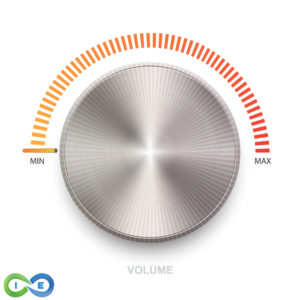We put together the following life insurance statistics and facts to help our readers get a better grasp of just how big the life insurance marketplace is, and to get a better understanding of why choosing a highly rated life insurance company is important when deciding on what carrier to buy life insurance with.
Life Insurance Facts
Apart from searching out the best life insurance rates online, another popular search is to find out all the interesting statistics of life insurance.
Now, most people might think life insurance is boring, but we hope we have put together some interesting information for you that you might find intriguing.
We have broken down the various life insurance facts into categories for easier viewing. We also did our best to provide references for each life insurance statistic and fact where applicable.
Table of Contents:
- Life Insurance Ownership Stats
- Facts on Purchasing Life Insurance
- Life Insurance Coverage Statistics
- Statistics on Life Insurance Premiums
- Life Insurance Industry Facts
- Life Insurance Industry Financial Statistics
Life Insurance Ownership
- 57% of American adults have life insurance in one form or another.[1] Of the American adults who have life insurance, between sixty and seventy percent are “under-insured” when compared with the coverage standards recommended by most professional financial advisers.[2]
- 32% of insured adults’ coverage is limited to participation in a group plan through their employer or another organization.[3]
- Over the last twenty years, the number of new life insurance policies issued per year has averaged about 30 million.[4] Variance between years has been relatively small except that, in both 2001 and 2002, around 10 million additional policies per year were purchased, likely as a result of the September 11, 2001, terrorist attacks. 9/11 resulted in combined insurance payouts totaling well over $30 billion.[5]
- Over the last ten years, life insurance policies issued to individuals have held steady or slightly increased, while group life policies and credit life policies have both decreased.[6]
- According to the National Association of Insurance Commissioners (NAIC), California, Texas, and New York are the largest life insurance purchasers in terms of aggregate coverage dollars purchased per state— with those three states purchasing more coverage than the bottom 36 states combined. California alone purchases more life insurance than 27 states. Wyoming purchases the least life insurance.
- The U.S. is by far the largest life insurance market, followed by Japan and China. When comparing countries’ life insurance markets to national GDP, though, Taiwan ranks the highest.[7]
Purchasing Life Insurance
- Around 50% of American adults report researching life insurance online in any given year.[8]
- A majority of Americans researching or shopping for life insurance online indicated that their preferred method for purchasing coverage is to work with an independent agent or other financial expert.[9]
- According to LIMRA, approximately 40% of newly issued life insurance policies are purchased from “captive agents” working for only one life insurance company.[10]
- A little over half of new life insurance policies are sold through independent agents, and around five percent of newly issued policies are sold directly to consumers via internet, telephone, or mail.[11]
- Around thirty percent of American consumers state that they are comfortable comparing policies and purchasing life insurance exclusively online.[12] Individuals born between 1965 and 1980 (“Gen X”) are the age cohort who report being most comfortable purchasing life insurance exclusively online.[13]
- 50% percent of surveyed consumers state that a medical examination requirement would make them less likely to purchase coverage.[14] Although lower premiums are often available with policies that require an exam, 70% of surveyed consumers reported being interested in purchasing no-exam life insurance.[15]
Life Insurance Coverage
- The most frequently cited reason for obtaining life insurance coverage, as reported by 37% of consumers, was “income replacement” (i.e., to ensure a means of financial support for loved ones in the event of untimely death).[16]
- When obtaining life insurance for income replacement, financial advisers frequently recommend purchasing coverage with proceeds equal to around 1,000% of annual income.[17] An online life insurance calculator can help you determine your ideal amount of coverage.
- The average death benefit for life insurance policies issued to Americans in 2018 was $168,000.[18]
- Three out of every ten life insurance purchasers obtained a policy to pay for funeral and burial costs, while nearly one in three purchasers cited tax advantages. [19] Tax benefits of whole life and other cash-value policies include tax-deferred growth as a savings vehicle, reduction of estate-tax liability, and guaranteed estate liquidity to pay estate taxes without risking other assets.
- A little less than ten percent of policyholders obtained coverage as a means of protecting a business, its owners and/or employees. [20] Whole life insurance is commonly used to fund buy/sell agreements, protect businesses against the loss of a “key person,” or as part of a succession or continuity plan.
Life Insurance Premiums
- 65% of Americans without life insurance report that the reason they do not have coverage is that they believe policies are too expensive.[21]
- About four out of five American consumers over-estimate the cost of life insurance premiums.[22]
- Nearly half of young adults estimate life insurance premium rates as five hundred percent more expensive than actual rates.[23]
- Life insurance premiums for men average around 20—30% higher than for women the same age.[24]
- The cost of life insurance premiums increases significantly as you age. A forty-year-old male purchasing a twenty-year term policy will pay approximately 39% higher premiums than a thirty-year old male, and a fifty-year old male pays around 120% more than the forty-year old. For women, the price increase is comparable between age 30 and 40, but the increase between age 40 and age 50 is a little less than for males, at around 95%.[25]
- A 35-year-old female non-smoker can often purchase a 20-year term life policy with over $1 Million in coverage for well under $50.00 per month. A similar term policy purchased by a 60-year-old male would cost over ten times as much.[26]
- On average, the premium cost for a policy that accrues cash value and has a guaranteed death benefit (e.g., universal or whole life) is approximately 8 times higher than for a term life policy with a similar coverage level.[27]
- Most life insurance companies charge higher premiums for smokers, often double non-smoker rates. Generally, former smokers applying for life insurance must have quit smoking for at least one year before qualifying for non-smoker premium rates.[28]
Life Insurance Industry
- According to the National Association of Insurance Commissioners, there were 841 companies in the U.S. life insurance industry in 2018.[29] The large majority of life insurers do not issue policies in every state. A few companies specializing in annuities are considered to be within the life insurance industry, but do not actually issue life insurance policies.
- 109 of the life insurance companies in the U.S. are “mutual insurance companies,” which are owned by policyholders and issue dividends to policyholders.[30]
- J.D. Power reports that in 2019 the top three life insurance companies in terms of customer satisfaction scores were Northwestern Mutual, State Farm, and Mutual of Omaha.
- No single life insurance company has a share of the American life insurance market greater than 10.00%. Based on NAIC statistics and NerdWallet.com reporting, the largest life insurer in terms of total market share is MetLife, and Northwestern Mutual tops the list for policies issued directly to individuals.
- Northwestern Mutual is the only life insurance company to rank in the top five for both market share of policies sold directly to individuals and J.D. Power customer satisfaction, coming in at first and second, respectively.
- The combined share of the American market of the ten largest life insurance companies (including MetLife, Prudential, New York Life, Mass Mutual, The Hartford, and Aetna) is around half of the total American market.[31]
- The single biggest player in the worldwide insurance industry is Hong Kong’s AIA Group. AIA’s market capitalization exceeds $120 billion.[32]
- The first “life insurance company” in America is generally considered to have been the Presbyterian Minister’s Fund, which formed in 1759 to provide financial support for the families of Presbyterian clergymen.[33]
Life Insurance Industry Financial Statistics
- As of 2018, premiums from life insurance policies totaled around $180 billion, accounting for about 24% of life insurance companies’ revenue derived from premiums (as opposed to investment revenue). Premiums and deposits from annuities and accident or health insurance made up most of the remainder. Of the revenue from life insurance premiums, about four-fifths came from ordinary, direct policies, and the other one-fifth from group life policies.[34]
- Payouts for policy and annuity proceeds and cash-value surrenders comprise around three-fourths of life insurance companies’ expenses per year.[35]
- Life insurance companies paid out over $18 billion in policyholder dividends in 2018.[36]
- For the life insurance industry as a whole, net investment income was around 30% higher than revenue from life insurance premiums.[37]
- The life insurance industry’s gross cashflow from investments totaled over $900 billion in 2018.[38]
- By far, bonds are the highest investment holding of life insurance companies, at over 70% of the industry total. The industry’s second-largest holding, real estate mortgage loans, comprises about 12%.
References:
[1] Life Insurance and Market Research Assoc. (“LIMRA”), 2019 Insurance Barometer Study.
[2] https://spendmenot.com/life-insurance-statistics/; https://policygenius.com/life-insurance.
[3] Life Insurance and Market Research Assoc. (“LIMRA”), 2019 Insurance Barometer Study.
[4] As reported by the NAIC.
[5] Insurance Information Institute, Terrorism and Insurance: 13 Years after 9/11 the Threat of Terrorist Attack Remains Real (2013).
[6] https://spendmenot.com/life-insurance-statistics/; https://policygenius.com/life-insurance.
[7] Id.
[8] Insurance Information Institute, Facts + Statistics: Life Insurance (https://www.iii.org/fact-statistic/facts-statistics-life-insurance).
[9] Insurance Information Institute, Facts + Statistics: Life Insurance (https://www.iii.org/fact-statistic/facts-statistics-life-insurance), citing LIMRA 2018 Barometer Study.
[10] Life Insurance and Market Research Assoc. (“LIMRA”), 2019 Insurance Barometer Study.
[11] Insurance Information Institute, Facts + Statistics: Life Insurance (https://www.iii.org/fact-statistic/facts-statistics-life-insurance).
[12] https://spendmenot.com/life-insurance-statistics/.
[13] Insurance Information Institute, Facts + Statistics: Life Insurance (https://www.iii.org/fact-statistic/facts-statistics-life-insurance), citing LIMRA 2018 Barometer Study.
[14] [14] Insurance Information Institute, Facts + Statistics: Life Insurance (https://www.iii.org/fact-statistic/facts-statistics-life-insurance).
[15] https://simplelifeinsure.com/facts/.
[16] Life Insurance and Market Research Assoc. (“LIMRA”), 2019 Insurance Barometer Study.
[17] https://policygenius.com/life-insurance; See also, Howard, Clark. How to Buy Term Life Insurance, Dec. 4, 2019.
[18] https://www.statista.com/topics/1411/life-insurance/.
[19] Life Insurance and Market Research Assoc. (“LIMRA”), 2019 Insurance Barometer Study.
[20] Life Insurance and Market Research Assoc. (“LIMRA”), 2019 Insurance Barometer Study.
[21] Howard, Clark. How to Buy Term Life Insurance, Dec. 4, 2019 (https://clark.com/insurance/life-insurance/term-life-insurance-how-to-buy/); citing LIMRA.
[22] https://simplelifeinsure.com/facts/.
[23] Insurance Information Institute, Facts + Statistics: Life Insurance (https://www.iii.org/fact-statistic/facts-statistics-life-insurance).
[24] As reported by https://policygenius.com.
[25] Based on data reported by policygenius.com.
[26] Id.
[27] As reported by https://policygenius.com.
[28] Id.
[29] https://www.iii.org/fact-statistic/facts-statistics-industry-overview.
[30] https://www.statista.com/topics/1411/life-insurance/.
[31] https://spendmenot.com/life-insurance-statistics/; citing https://statista.com.
[32] Id.
[33] Id.
[34] Insurance Information Institute, Facts + Statistics: Life Insurance (https://www.iii.org/fact-statistic/facts-statistics-life-insurance).
[35] Insurance Information Institute, Facts + Statistics: Life Insurance (https://www.iii.org/fact-statistic/facts-statistics-life-insurance).
[36] Insurance Information Institute, Facts + Statistics: Life Insurance (https://www.iii.org/fact-statistic/facts-statistics-life-insurance).
[37] Insurance Information Institute, Facts + Statistics: Life Insurance (https://www.iii.org/fact-statistic/facts-statistics-life-insurance).
[38] Id.





